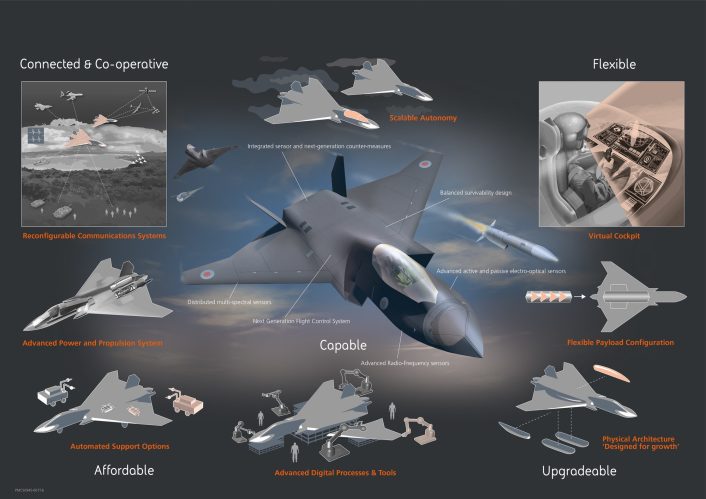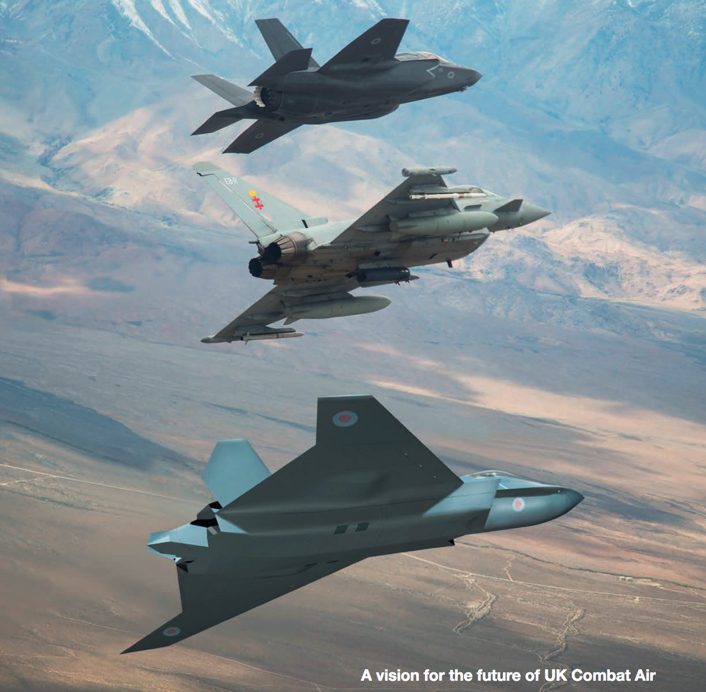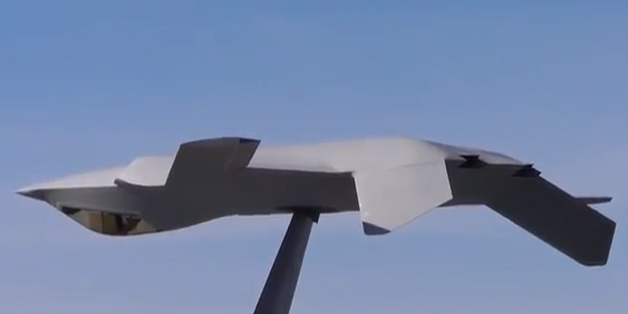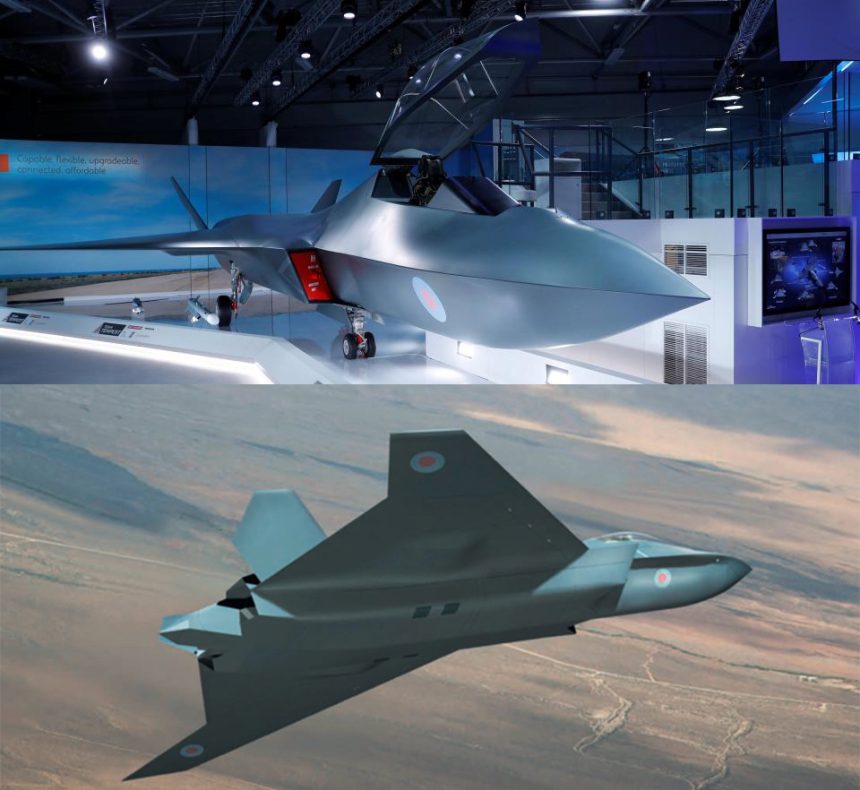A concept model of the Tempest was unveiled yesterday. And here’s a first analysis.
On Jul. 16, UK Defence Secretary Gavin Williamson announced the development of a new combat aircraft that has been designated Tempest.
Announcing the publication of the new Combat Air Strategy at the Farnborough International Airshow 2018 (FIA 18), Williamson said he had taken action to strengthen the UK’s role as a global leader in the sector.
He outlined the Strategy in front of a mock-up of the Tempest, a next (6th) generation combat aircraft developed by Team Tempest, a consortium including BAE Systems, Rolls-Royce, Leonardo and MBDA, in collaboration with the Ministry of Defence.
“We have been a world leader in the combat air sector for a century, with an enviable array of skills and technology, and this Strategy makes clear that we are determined to make sure it stays that way. It shows our allies that we are open to working together to protect the skies in an increasingly threatening future – and this concept model is just a glimpse into what the future could look like,” Williamson said.
According to the first details unveiled so far the Tempest will feature all the most interesting (and cool) technologies currently being developed (and in some case already fielded): Artificial Intelligence and Machine Learning, Drone “Swarming”, Direct Energy Weapons, etc.

The UK plans to invest 2 billion GBP in Combat Air Strategy and the Tempest. “Early decisions around how to acquire the capability will be confirmed by the end of 2020, before final investment decisions are made by 2025. The aim is then for a next generation platform to have operational capability by 2035,” says the British MoD in the official press release following the announcement. Considered the time required to develop 4th and 5th generation aircraft (and in particular the controversial F-35) an (initial) operational capability in “just” 17 years from now seems a quite optimistic (or “aggressive”) deadline. For sure the Tempest is intended to eventually replace the Eurofighter Typhoon by the late 2030s or early 2040s. Moreover, the current plan does not include the possible delays induced by negotiations and onboarding of other European partners: it’s not clear what France and Germany will do with their own 6th generation aircraft announced last April at ILA18, but Italy (already supporting the new UK’s aircraft by means of Leonardo, that will be responsible for avionics and EW suite), among the others, is a natural candidate to join the project and invest money and skills in the Tempest rather than the “système de combat aérien du futur,” or SCAF, that appears to be a more “closed” joint venture at the moment.

Dealing with the shape of the Tempest concept model, it bears some resemblance with current stealth fighters, especially the American F-22 (the front section) and F-35: the aircraft features a cranked kite design similar to the one used by most of the UCAV (Unmanned Combat Aerial Vehicle) demonstrators such as the X-47B or the nEUROn, but the presence of the canted vertical stabilizers indicate “a preference for fighter-like agility since they aid horizontal stability during manoeuvres, especially in extreme flight regimes. However, they also limit the extent to which an aircraft’s radar signature can be reduced, especially against low-frequency ‘anti-stealth’ type radars,” commented Aerospace and defence analyst Justin Bronk from the Royal United Services Institute (RUSI). In other words, the Team Tempest seems to prefer agility against low-observability, as if stealthiness will become less important than ability to maneuver against future missiles and enemy aircraft in the future scenarios.
Meteor BVRAAM and SPEAR 3 displayed next to Tempest. pic.twitter.com/lhAQVwqO74
— Tim Robinson (@RAeSTimR) July 16, 2018
Generally speaking, the Tempest’s shape clearly reminds the BAe Replica, a British stealth aircraft model developed by BAe in the 1990s and used for radar testing for the FOAS (Future Offensive Air System) a study aimed at finding a replacement for the RAF Tornado GR4. After the program was scrapped in 2005, it was replaced by the Deep and Persistent Offensive Capability (DPOC) program that was itself cancelled in 2010, following the UK military’s spending review. The Taranis UCAV (Unmanned Combat Air Vehicle) a semi-autonomous pilotless system able to carry a wide variety of weapons, including PGMs (Precision Guided Munitions) and air-to-air missiles, emerged as the eventual successor of the FOAS.
A full-scale model of the BAe Replica became somehow famous when it was spotted being moved to be installed, inverted, on a pole (the typical configuration used for testing the radar signature of a plane) was filmed at BAE Systems facilities at Warton, in Lancashire, UK, in 2014.

Although the wings appear to be different, the BAe Replica model features twin engines, diverterless supersonic intakes and canted fins that can be found in the Tempest. Compared to the BAe Replica the Tempest appears to have a larger fuselage (along with the larger wing) that would allow for increased fuel and payload.
Another angle on Team Tempest next gen fighter – the UKs vision of what is needed for a “new more dangerous era of warfare” according to Defence Secretary Gavin Williamson. #fia18 #avgeek pic.twitter.com/gu6ufCyur7
— Tim Robinson (@RAeSTimR) July 16, 2018
Noteworthy on the Tempest is also the presence of a cockpit to accommodate a pilot: the 6th generation aircraft will be “optionally manned”. Although next generation aircraft will be able to fly as drones, there is still a future for combat pilots as well.
Top image: composite using Reuters/Crown Copyright images








